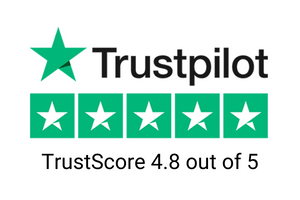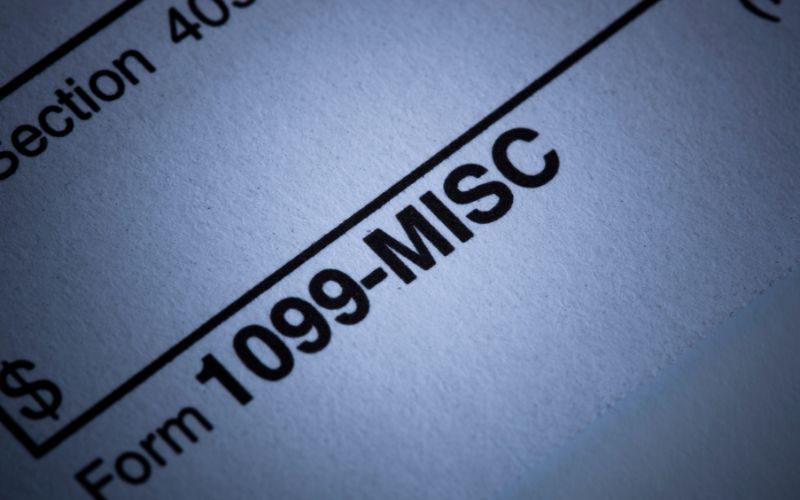Last Updated: March 25, 2025
A Comprehensive Guide to Form 982 and Form 1099-C

Disclaimer: We are not qualified tax professionals and are not giving advice. Always speak with a qualified professional before making any legal or financial decisions.
For people deep in debt, have poor credit, and have no realistic chance of repaying their debt, debt settlement can be a very valuable tool to reduce your debt. The IRS may view any forgiven loan or debt canceled as a form of taxable income, which could result in a significant tax burden. However, IRS Form 982 provides a way to reduce or eliminate taxes on forgiven debt if you qualify.
This comprehensive guide will help you understand:
- What Form 982 is and how it works
- Whether you qualify for tax relief
- How to properly complete the form
- The relationship between Form 982 and Form 1099-C
- Step-by-step instructions with examples
For people deep in debt, have poor credit, and have no realistic chance of repaying their debt, debt settlement can be a very valuable tool to get out of debt. The IRS may view any forgiven loan or debt canceled as a form of taxable income.
Eager to talk now? Skip the article and secure a free consultation with a debt specialist.
What is IRS Form 982?
IRS Form 982 (Reduction of Tax Attributes Due to Discharge of Indebtedness) is a critical tax form that allows taxpayers to exclude certain canceled debts from their taxable income. Without this form, any debt over $600 that is forgiven or canceled will typically be treated as taxable income on your tax return.
The official title of Form 982 is "Reducing Tax Attributes of Depreciable Property for Cancelled Debt," and it may be used to determine the amount of debt forgiveness that can be excluded from gross income.
Form 982 consists of three main parts:
- Part I: General information about your debt exclusion
- Part II: Reduction of tax attributes
- Part III: Exclusion of qualified principal residence indebtedness
Who Qualifies for Form 982 Tax Relief?
To use this form and potentially reduce your tax liability, you must meet one of the following criteria:
- Qualified farm indebtedness
- Debt is qualified real property business debt
- You are insolvent or bankrupt (the former is a financial issue decided by the IRS, and the latter is a legal judgment)
- Debt is qualified principal residence indebtedness
- Debt forgiveness was a gift
Each qualification type has specific rules and documentation requirements:
Bankruptcy Qualification
If your debt was discharged through bankruptcy proceedings (Chapter 7, 11, or 13), you generally can exclude all canceled debt from your income. You'll need to check box 1a in Part I of Form 982 and attach relevant bankruptcy documentation.
Insolvency Qualification
If you were insolvent (your total debts exceeded the total fair market value of all your assets) immediately before the cancellation of debt, you may exclude canceled debt from income up to the amount of your insolvency. You'll check box 1b in Part I and complete the insolvency worksheet.
Principal Residence Qualification
For qualified principal residence indebtedness (typically mortgage debt on your main home), you can exclude up to $750,000 ($375,000 if married filing separately) if the debt was forgiven before January 1, 2026. Check box 1e in Part I.
If you are eligible to file Form 982, you should consider talking with a legal certified tax preparer or another tax professional to ensure proper completion.
Form 982 consists of three main parts:
- Part I: General information about your debt exclusion
- Part II: Reduction of tax attributes
- Part III: Exclusion of qualified principal residence indebtedness
Who Qualifies for Form 982 Tax Relief?
To use this form and potentially reduce your tax liability, you must meet one of the following criteria:
- Qualified farm indebtedness
- Debt is qualified real property business debt
- You are insolvent or bankrupt (the former is a financial issue decided by the IRS, and the latter is a legal judgment)
- Debt is qualified principal residence indebtedness
- Debt forgiveness was a gift
Each qualification type has specific rules and documentation requirements:
Bankruptcy Qualification
If your debt was discharged through bankruptcy proceedings (Chapter 7, 11, or 13), you generally can exclude all canceled debt from your income. You'll need to check box 1a in Part I of Form 982 and attach relevant bankruptcy documentation.
Insolvency Qualification
If you were insolvent (your total debts exceeded the total fair market value of all your assets) immediately before the cancellation of debt, you may exclude canceled debt from income up to the amount of your insolvency. You'll check box 1b in Part I and complete the insolvency worksheet.
Principal Residence Qualification
For qualified principal residence indebtedness (typically mortgage debt on your main home), you can exclude up to $750,000 ($375,000 if married filing separately) if the debt was forgiven before January 1, 2026. Check box 1e in Part I.
If you are eligible to file Form 982, you should consider talking with a legal certified tax preparer or another tax professional to ensure proper completion.
How to Complete Form 982 (Step-by-Step)
When dealing with canceled debt, proper completion of Form 982 is essential to avoid unexpected tax liabilities. Here's a comprehensive guide:
Calculating Insolvency for Form 982 Insolvency occurs when your total liabilities exceed your total assets immediately before the debt cancellation.
- Calculate your total assets (include fair market value of:) • Cash and bank accounts • Investment accounts • Retirement accounts (IRAs, 401(k)s) • Real estate • Vehicles • Personal belongings • Life insurance cash value • Business interests
- Calculate your total liabilities: • Mortgages • Car loans • Credit card debt • Student loans • Medical bills • Personal loans • Tax debt • Other obligations
- Determine insolvency amount: If liabilities exceed assets, you're insolvent by that amount. You can exclude canceled debt from income up to this amount.
Filing Process: If you are insolvent, part or all of the debt forgiven may be excluded from your income, called an insolvency exclusion.
To claim insolvency:
- Complete the insolvency worksheet (available on the IRS website)
- Submit Form 982 with your tax return, checking box 1b in Part I
- Include bankruptcy declaration if applicable
- Attach any Form 1099-C you received
- Provide any additional information as requested by the IRS
On Form 982, you'll need to:
- Check the appropriate box in Part I indicating your reason for exclusion
- Enter the amount excluded in line 2
- Complete Part II if required (for reduction of tax attributes)
- Complete Part III if excluding qualified principal residence indebtedness
If approved, you may be eligible for partial or full tax relief on your canceled debt. We recommend consulting with a tax specialist or lawyer for personalized advice.
Common Form 982 Filing Mistakes to Avoid:
- Failing to attach Form 982 to your tax return
- Not checking the correct exclusion box in Part I
- Incorrectly calculating insolvency amount
- Forgetting to include all assets in your insolvency calculation
- Not reporting the canceled debt on your tax return at all
- Missing the filing deadline
Learn more by reading how to use the IRS form 982 and 1099-c cancellation of debt.
Understanding IRS Form 1099 C
IRS Form 1099 C - Cancellation of Debt is a form you will be mailed from your creditor. A 1099 form reports to the IRS any income that is not wages. There are different 1099 forms that cover other income from bartering to distributions on a retirement fund.
Exceptions to Form 1099 C Cancellation
There are a few exceptions to what debt is considered income. These may include:
- Debt discharged by bankruptcy - unless you file late
- Insolvency - with the difference still being taxable as explained above
- Debt qualifies under a business or farm exclusion
- Debt was canceled as a gift
- Debts forgiven includes tax-deductible interest (interest is not included in debt)
- Certain qualified student loans were forgiven for service
- Student loans were discharged because of permanent disability or death
- You received a Paycheck Protection Program loan
Our Conclusion
If you pursue debt settlement to get out of debt, you may receive a 1099-C for forgiven debt over $600. Understanding how to properly use Form 982 can potentially save you thousands in tax liability by excluding this canceled debt from your taxable income.
Form 982 is essential for excluding canceled debt from your taxable income
Qualification is based on bankruptcy, insolvency, principal residence, or specific debt types
Proper documentation and accurate calculations are critical for approval
Filing deadlines must be strictly followed
We strongly encourage you to work with a qualified tax professional to minimize your tax liability and to file these forms properly. Even if you qualify for full exclusion, the paperwork must be completed accurately to avoid IRS scrutiny.
*Disclaimer:
Pacific Debt Relief explicitly states that it is not a credit repair organization, and its program does not aim to improve individuals' credit scores. The information provided here is intended solely for educational purposes, aiding consumers in making informed decisions regarding credit and debt matters. The content does not constitute legal or financial advice. Pacific Debt Relief strongly advises individuals to seek the counsel of qualified professionals before undertaking any legal or financial actions.
Reduce Your Credit Card Debt By Up to Half

BBB Reviews | 4.9/5.0 Rating









 Do Not Sell My Personal Information
Do Not Sell My Personal Information